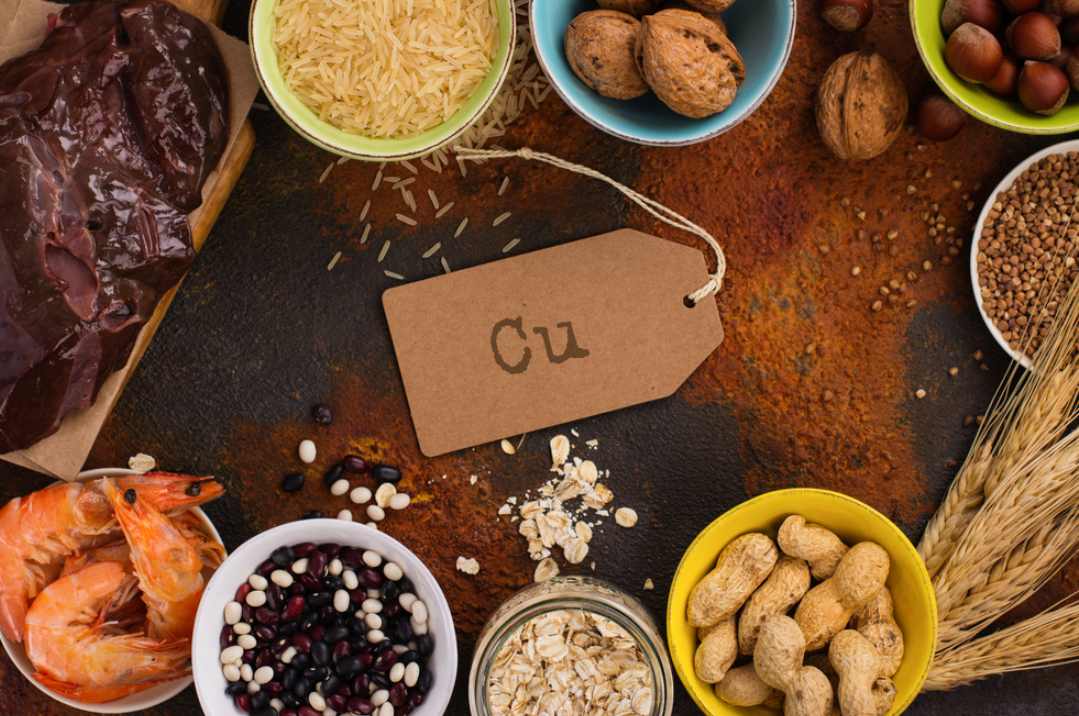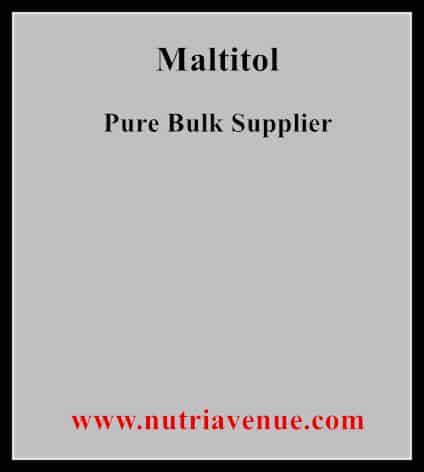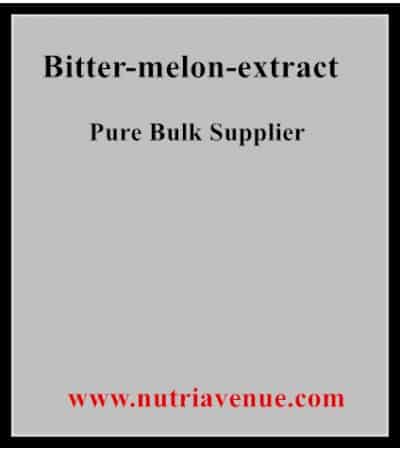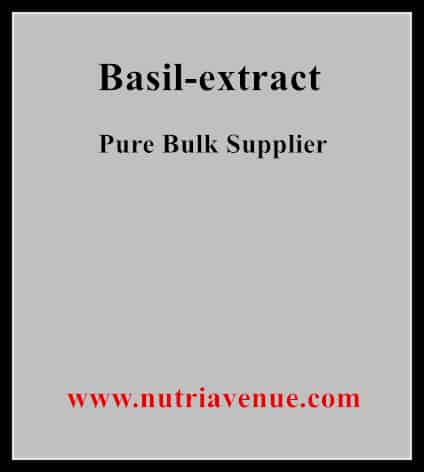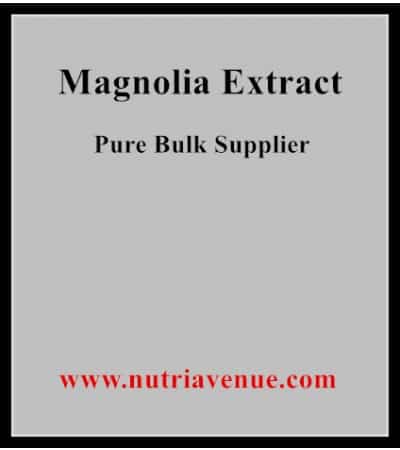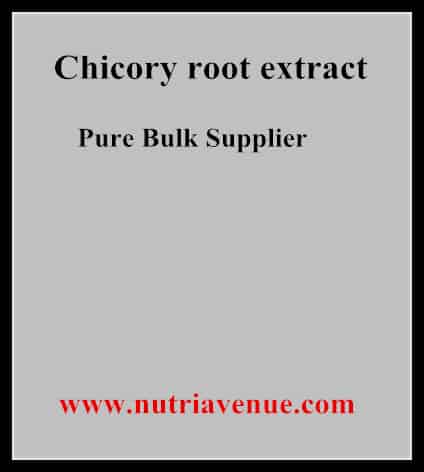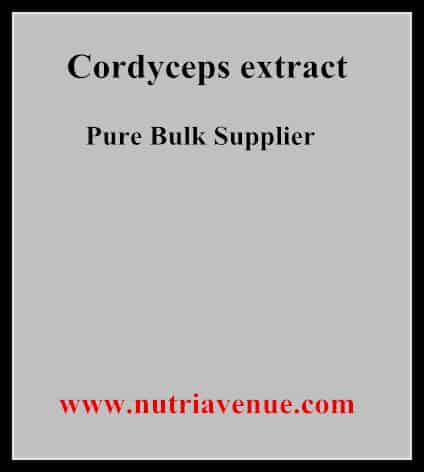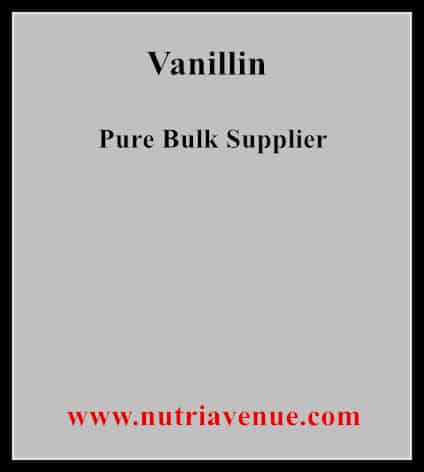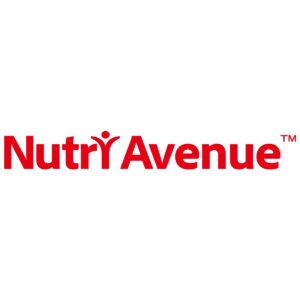What Is Copper?
Copper, often called the unsung hero among minerals, is vital for overall health and well-being. While it may not grab headlines like other nutrients, copper quietly carries out many essential functions in the human body. From supporting the production of red blood cells to aiding in the formation of connective tissues and contributing to a healthy immune system, copper is a remarkable micronutrient with far-reaching effects. In recent years, copper has also gained recognition in the world of nutraceuticals, where it is harnessed for its potential health benefits beyond traditional dietary intake. By recognizing the powerful possibilities of copper in nutraceuticals, we discover a bright future where this underappreciated mineral plays a central role, leading us toward better health and bridging the gap between science and nature.
What Common Forms Of Copper Are Contained In Dietary Supplements?
Cupric Oxide
Cupric Oxide, also known as copper(II) oxide, has a chemical formula CuO. Its CAS number is 1317-38-0, with a molecular weight of approximately 79.55 g/mol. Cupric oxide is commonly referred to by other names, such as copper monoxide or black copper oxide, due to its characteristic black color. However, it’s important to note that cupric oxide should not be confused with cuprous oxide (Cu2O), which has a different chemical composition and properties. Regarding its FDA approval, specific uses and applications of cupric oxide may be subject to regulation and approval by the FDA depending on their intended purpose.
Cupric Sulfate
Cupric Sulfate, also called copper(II) sulfate, is a chemical compound represented by the formula CuSO4. Its CAS number is 7758-98-7, and it has a molecular weight of approximately 159.61 g/mol. Other names, such as Copper Sulphate, Blue Vitriol, or bluestone, commonly refer to cupric sulfate. Cupric Sulfate is FDA-approved and is considered safe.
Copper Amino Acid Chelate
Copper Amino Acid Chelates are intriguing compounds that combine the essential mineral copper with amino acids through a chelation process, resulting in a unique molecular structure. While there isn’t a single CAS number, as different copper amino acid chelates can have varying compositions, they generally possess the molecular formula Cu(AA)n, where AA represents the amino acid and n denotes the number of amino acid molecules. With molecular weights that depend on the specific amino acid and chelate structure, these compounds offer enhanced bioavailability and absorption of copper in the body. Commonly known as copper chelates or complexes, they are valued for their potential health benefits and are widely used in nutrition and dietary supplementation. As for FDA approval, approval status may vary depending on the specific copper amino acid chelate product and its intended use.
Copper Gluconate
Copper Gluconate is a fascinating compound that combines the essential mineral copper with gluconic acid, resulting in a unique molecular structure. Its CAS number is 527-09-3, and its molecular formula is C12H22CuO14. With a molecular weight of approximately 453.84 g/mol, Copper Gluconate is valued for its potential health benefits and is commonly used in various applications, including dietary supplements and pharmaceutical preparations. It is also known by other names such as Cupric Gluconate. Copper Gluconate is a nutrient or dietary supplement considered safe by the FDA. Good manufacturing or feeding practices use it and should not exceed a concentration of 0.005 percent.
Copper Bisglycinate
Copper Bisglycinate, also known as Copper Glycinate Chelate, is a compound with the CAS number 13479-54-4. Its molecular formula is C4H8CuN2O4, with a molecular weight of approximately 213.68 g/mol. This chelate compound is formed by combining copper with two glycine molecules, resulting in a unique structure that enhances the bioavailability of copper. Its chemical name commonly refers to Copper Bisglycinate and may also be known as Bisglycinate Copper Complex.
Copper Peptides
Copper peptides, with the CAS number 49557-75-7, have the molecular formula C14H24N6O4 and a molecular weight of approximately 340.5 g/mol. These peptides are also known as glycyl-L-histidyl-L-lysine copper complex or GHK-Cu, referring to the specific sequence of amino acids involved. Copper peptides are widely used in the skincare industry due to their potential benefits for skin health and rejuvenation. They have been studied for their role in promoting collagen synthesis, antioxidant effects, and wound-healing properties.
Copper Citrate
Copper citrate, also known as cupric citrate, has the CAS number 7745-67-5. Its molecular formula is C12H10Cu3O14, with a molecular weight of approximately 601.85 g/mol. Copper citrate is a compound formed by combining copper with citric acid. It is commonly used as a source of copper in dietary supplements and food additives due to its bioavailability. This compound is also called tri-copper dicitrate or copper citrate.
What is the best form of copper for hair?
Finding the best type of copper for hair involves considering factors like how well it is absorbed by the body and its compatibility with hair care products. Copper peptides have shown promise in this regard.
Copper peptides are small proteins that help deliver copper to the scalp and hair follicles. Their unique structure allows them to be easily absorbed into the skin, leading to better absorption and utilization of copper. Adding copper peptides to hair care products may help produce essential proteins like keratin, support hair growth, and provide antioxidant effects. However, more research and clinical studies are needed to fully understand the benefits and effectiveness of copper peptides for hair concerns.
Which form of copper is best absorbed?
Research indicates that Copper Bisglycinate, a type of copper bound to glycine, is more easily absorbed than other copper forms. This improved absorption is due to the chelation process, which enhances the stability and solubility of copper in the digestive system. Moreover, Copper Bisglycinate avoids competing with other minerals during absorption, ensuring efficient uptake. However, the most suitable form of copper for absorption can vary based on factors such as age, health, and specific dietary needs. Individual considerations should be considered when selecting the optimal form of copper for maximum absorption.
Which form of copper has the highest concentration?
Copper sulfate pentahydrate (CuSO4·5H2O) is the form of copper with the highest concentration. It contains a significant amount of copper per unit weight compared to other copper compounds. This makes it a popular choice in various industries, such as agriculture and electroplating, where a concentrated source of copper is needed. Five water molecules in its structure provide stability and make it easy to handle. It’s versatility and high copper content make copper sulfate pentahydrate valuable for precise dosing and efficient utilization in different processes.
Which forms of copper are bioavailable?
Several forms of copper are known to be bioavailable, meaning they can be readily absorbed and utilized by the body. These include as below.
- Copper Bisglycinate: Copper bis-glycinate is a chelated form of copper where copper ions are bound to two glycine molecules. This chelation process enhances the stability and bioavailability of copper, making it easier for the body to absorb and utilize.
- Copper Gluconate: Copper gluconate is another commonly used form of copper in supplements. It is a copper salt of gluconic acid known for its good bioavailability. Copper gluconate is easily absorbed by the body, making it an effective source of copper supplementation.
- Copper Citrate: Copper citrate is a form of copper where copper ions are bound to citric acid. It is also considered good bioavailability and is commonly used in supplements.
- Copper Sulfate: Copper sulfate is a simple inorganic form of copper. While it is less commonly used in supplements due to its potential gastrointestinal side effects, it is still considered bioavailable when consumed appropriately.
Where Can Different Copper Types Apply To?
Copper types can find applications in various industries and products. Here are some common areas where different copper types are utilized:
Dietary Supplements
Copper is frequently incorporated into dietary supplements such as Copper Bisglycinate, copper gluconate, or other chelated copper compounds. These supplements aim to provide an additional source of copper to support nutritional needs and promote overall health.
Cosmetic Products
Copper is utilized in cosmetic products, particularly those targeting skin and hair health. Copper peptides, such as GHK-Cu, are popular ingredients in anti-aging skincare formulations due to their potential benefits in promoting collagen synthesis and enhancing skin elasticity. Copper-infused hair products may also claim to support hair growth and thickness.
Agriculture and Animal Nutrition
Copper compounds, such as copper sulfate or copper chelates, are used in agriculture as additives for animal feed to fulfill copper requirements and prevent deficiencies in livestock. Copper-based fungicides can also be applied in agriculture to control plant diseases caused by fungal pathogens.
What Ingredients Can Be Used In Copper Supplements?
Copper supplements can contain different ingredients depending on specific formulation and purpose. Here are some common ingredients found in copper supplements.
Copper Compound
The copper compound is the main ingredient in copper supplements. It can be copper gluconate, copper sulfate, copper oxide, copper bis-glycinate, or other forms of chelated copper. These compounds provide the essential copper mineral in a form that the body can easily absorb.
Fillers and Excipients
Supplements may include fillers and excipients to ensure the proper formation of tablets or capsules, improve stability, and aid manufacturing. Examples of these substances are cellulose, silica, magnesium stearate, or microcrystalline cellulose.
Antioxidants
Some copper supplements may contain antioxidants like vitamin C (ascorbic acid) or vitamin E. These antioxidants help preserve the stability and shelf life of the copper compound by preventing oxidation.
Binders and Disintegrants
Binders, such as hydroxypropyl methylcellulose (HPMC), etc., are used to hold the ingredients together in tablet form. Disintegrants, like croscarmellose sodium or cross-linked polyvinylpyrrolidone (PVP), promote the breakdown and absorption of the tablet in the body.
Lubricants and Coatings
Lubricants like stearic acid or magnesium stearate assist in the tablet manufacturing process by preventing sticking. Coatings like hydroxypropyl cellulose or shellac may enhance swallowability, mask taste, or improve appearance.
Other Nutrients
Copper supplements might include additional nutrients or co-factors that support copper metabolism and overall health. These can include zinc, manganese, vitamin C, or amino acids like glycine or histidine, which aid in copper absorption.
Who Is The Best Copper Supplement Ingredients Supplier?
Nutri Avenue is the go-to copper ingredients supplier for copper supplement brands. Nutri Avenue offers a broad selection of top-quality copper ingredients explicitly designed for supplements. we prioritize meeting manufacturers’ diverse needs with our extensive range of FDA-approved copper ingredients, ensuring compliance and safety. Nutri Avenue’s commitment to excellence in quality, effectiveness, and customer satisfaction make them a leading brand in the field. Visit our website today to explore offerings and get a free quote.

